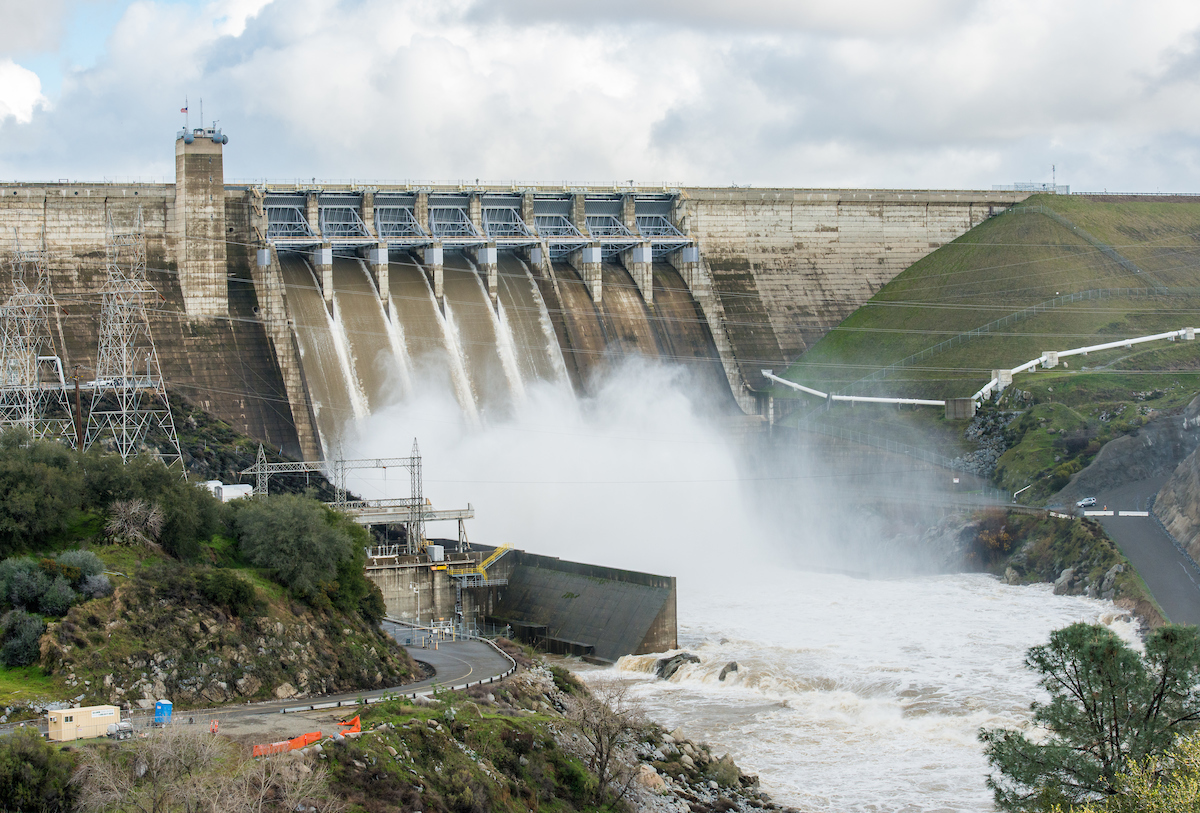Oh Damn! California Dam Projects Considered

New dams coming to California? A dozen projects seek $2.7 billion in state bond funding https://t.co/qO353M0Rpv #cawater #dams pic.twitter.com/IdniI1Fuvg
— Paul Rogers (@PaulRogersSJMN) August 15, 2017
Dams are rarely welcomed by anglers, conservationists and the like, but in a state like California, where water is always at a premium, the thought of creating new dams and potential sources for H2O will be a hot-button topic. Thus, a potential $2.7 billion project to construct nine new dams is being discussed.
Here’s Paul Rogers of the San Jose Mercury News with more, including some of the possible sites:
The list of applicants includes many ideas that have been around for years. Among them:
- Sites Reservoir: A proposed $5 billion reservoir in Colusa County, roughly 100 miles north of Napa, the reservoir would be built “off stream” in a valley and would divert water from the Sacramento River, holding 1.8 million acre feet. That’s enough water for the needs of 9 million people a year. It would rank Sites as the seventh largest reservoir in the state, roughly the size of San Luis between Gilroy and Los Banos.
- Los Vaqueros: The Contra Costa Water District is proposing to raise the earthen dam at Los Vaqueros reservoir by 55 feet, increasing the reservoir’s storage capacity from 160,000 acre feet to 275,000-acre feet, enough water to meet the annual needs of 1.4 million people. The $914 million project has a dozen Bay Area partners that would put up some of the money and receive some of the water as drought insurance. Among them are the Santa Clara Valley Water District, East Bay Municipal Utility District and the San Francisco Public Utilities Commission. The project was endorsed Monday by a coalition of six prominent environmental groups — including the Nature Conservancy, Audubon Society and Planning and Conservation League — because some of the water would go to Central Valley wetland refuges for ducks, geese and other wildlife, in addition to people and farms.
- Pacheco Pass: The Santa Clara Valley Water District is hoping to build a new reservoir in southern Santa Clara County near Pacheco Pass, along with a dam up to 300 feet high. The reservoir, which would cost roughly $900 million, would hold 130,000 acre-feet of water — enough to meet the water needs of 650,000 people for a year. The project would replace an existing small reservoir of 6,000 acre-feet that is used to recharge farmers’ groundwater.
- Temperance Flat: The U.S. Bureau of Reclamation has proposed building a 665-foot-high dam on the San Joaquin River in the Sierra foothills in Fresno County. The $3 billion project, which would construct the second-tallest dam in California, behind Oroville Dam, would create a reservoir of 1.3 million acre-feet, enough water for 6.5 million people a year.
- Semitropic: The groundwater district near Bakersfield, which stores water for agencies from the Bay Area to Los Angeles, has proposed an expansion.
- Kern Fan: The Irvine Ranch Water District in Irvine, which serves 380,000 residents of Orange County, is proposing to build a $171 million groundwater storage project at the south end of the Kern River.
- San Diego: The city of San Diego, which wants to produce one-third of its water by 2035 from recycled wastewater, is planning a $1.2 billion project to purify it and deliver it to Miramar Reservoir.
- Centennial Reservoir: The Nevada Irrigation District in Grass Valley is proposing building a 275-foot-tall dam and 110,000 acre-foot reservoir on the Bear River near Colfax in Placer County.
Because politics are involved and politics can get rather ugly – and don’t we all understand that now -these won’t be easy projects to get building.
Environmentalists generally prefer underground storage to building new dams, noting that it is cheaper, does not have evaporation, and doesn’t kill fish and wildlife. They argue that the new dams proposed for rivers, in particular, are problematic and not likely to yield much water because the state already has 1,200 dams and most of the best sites were taken decades ago.
“Many of these projects never penciled out when the beneficiaries had to pay the total costs,” said Jonas Minton, water policy adviser with the Planning and Conservation League in Sacramento. “Now in many cases they are asking the public to subsidize additional water for them.”
Proposition 1 was endorsed by the state Republican and Democratic parties, along with Gov. Jerry Brown, U.S. Sen. Dianne Feinstein, the California Chamber of Commerce, Silicon Valley Leadership Group and major unions and water districts. It was opposed by some environmental groups and commercial fishing organizations worried about the impact of new dams on fisheries.
Voters approved it 67-33 percent.
Some fish and wildlife advocates would prefer more dam removal rather than adding more dams.
Matilija #damremoval would open 31 mi of steelhead spawning habitat. Removing the #EelRiver dams would open 287 mi! https://t.co/Md3DVy10xn
— FOER (@FriendsEelRiver) August 12, 2017



